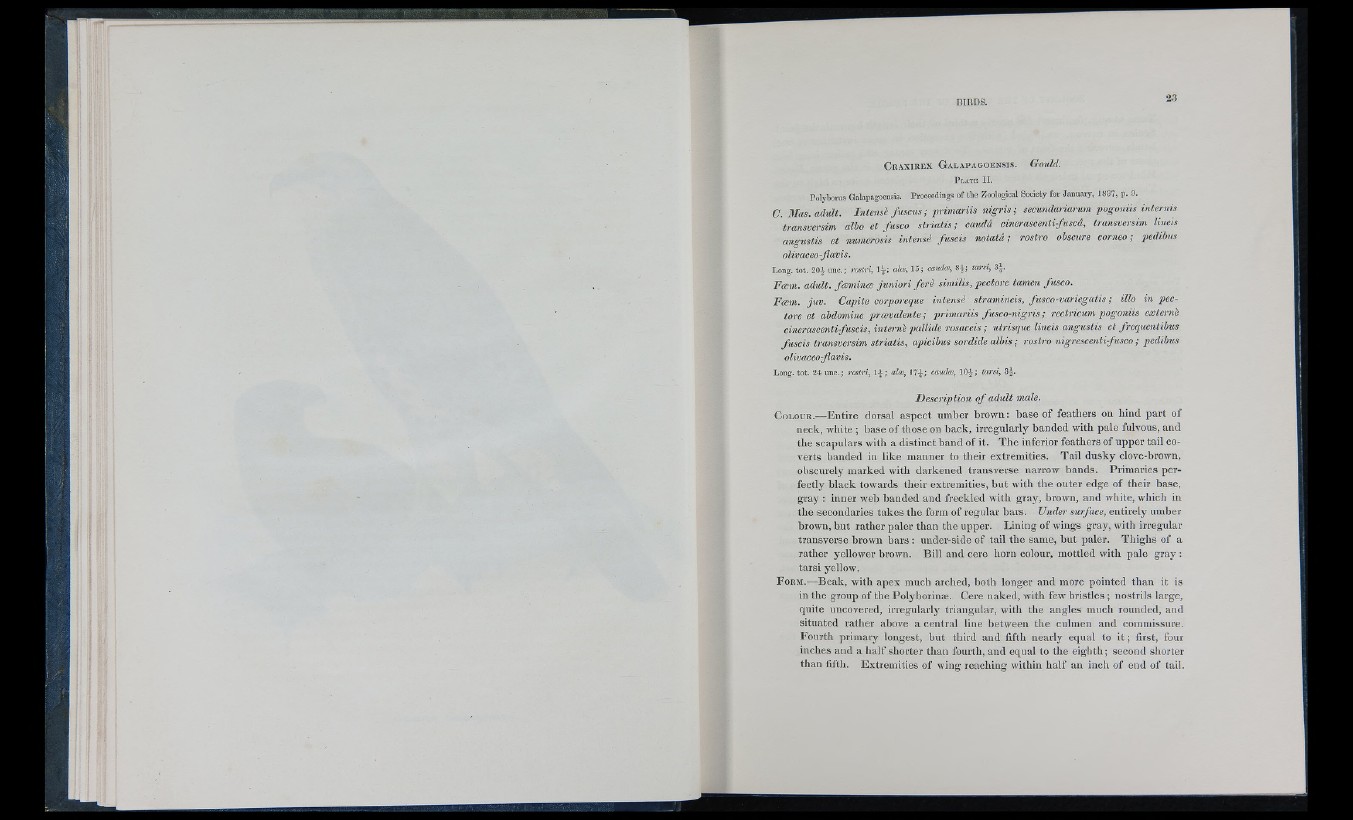
C r a x i r e x G a l a p a g o e n s i s . Gould.
P late II.
Polyloms Giikpagocnds. PtocMdinga of tlis Zoological Society for January, IS37, p. 9.
C. 3Ias. adult. Intensé fuscus ; primariis nigris; secundariarum pogoniis intends
transversim albo et fusco strialis ; caudd cinerascentifuscf transversim lineis
angustis et numerosis intensé fuscis notatá ; rostro obscure corneo; pedibus
olivaceo-flavis.
Long. tot. une.; rostri, l |- ; aloe, 15; caudæ, 8^; tarsi, 3 i.
Foem. adidt. fæminoe juuiori ferè similis, pectore lamen fusco.
Foem. juv. Capite corporeque intensé stramineis, fusco-variegatis ; illo in pectore
et abdomine prævalente ; primariis fusco-nigris ; rectricum jiogoniis externé
cinerascenti-fuscis, interné pallide rosaceis ; utrisque lineis angustis et frequentibus
fuscis transversim striatis, apicibus sordide albis ; rostro nigrescenti-fusco ; pedibus
olivaceo-Jlavis.
Long. tot. 24 une.; rostri, 1-J; aloe, 17-^; caudæ, 10-^; tarsi, 3 |.
Description o f adult male.
C o l o u r .— Entire dorsal aspect umber brown: base of feathers on hind part of
neck, white ; base of those on back, irregularly banded with pale fulvous, and
the scapulars with a distinct band of it. The inferior feathers of upper tail coverts
banded in like manner to their extremities. Tail dusky clove-brown,
obscurely marked with darkened transverse narrow bands. Primaries perfectly
black towards their extremities, but with the outer edge of their base,
gray : inner web banded and freckled with gray, brown, and white, which in
the secondaries takes the form of regular bars. Under surface, entirely umber
brown, but rather paler than the upper. Lining of wings gray, with irregular
transverse brown bars : nnder-side of tail the same, but paler. Thighs of a
rather yellower brown. Bill and cere horn colour, mottled with pale gray :
tarsi yellow.
F o r m .—Beak, with apex much arched, both longer and more pointed than it is
in the group of the Polyborinæ. Cere naked, with few bristles ; nostrils large,
quite uncovered, irregularly triangular, with the angles much rounded, and
situated rather above a central line between the culmen and commissure.
Fourth primary longest, but third and fifth nearly equal to it; first, four
inches and a half shorter than fourth, and equal to the eighth; second shorter
than fifth. Extremities of wing reaching within half an inch of end of tail.